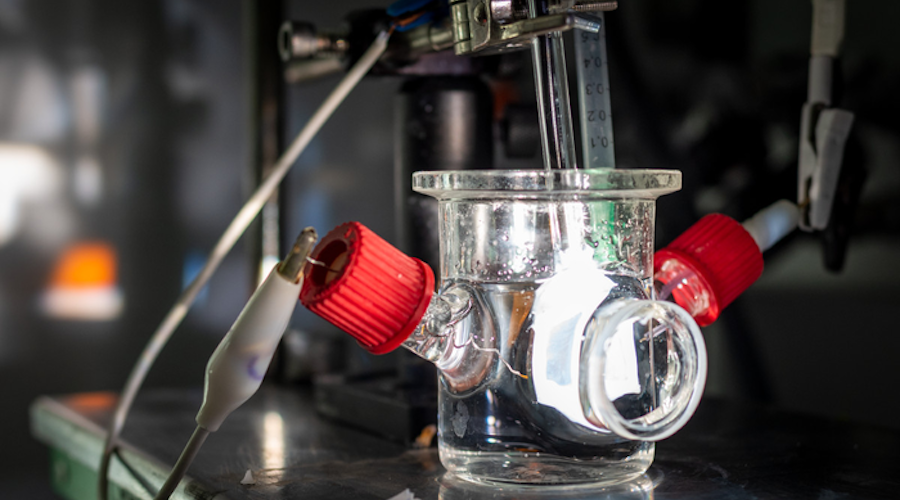
The solar fuels device designed by the group is known as a photoelectrochemical (PEC) cell and it is made of copper oxide or cuprous oxide (Cu2O), a promising artificial photosynthesis material.
Cuprous oxide has high reactivity to light, which is a positive quality but also causes the material to break down within just a few minutes of exposure. Despite its instability, cuprous oxide is considered one of the best candidate materials for artificial photosynthesis because it is relatively affordable and has suitable characteristics for absorbing visible light.
To better understand how to optimize the working conditions for this promising material, senior researcher Francesca Toma and her team took a closer look at cuprous oxide’s crystal structure before and after use.
In artificial photosynthesis research, scientists have typically used water as the electrolyte in the reduction of carbon dioxide into renewable chemicals or fuels, such as ethylene and hydrogen – but water contains hydroxide ions, which leads to instability.
Using a technique called ambient pressure X-ray photoelectron spectroscopy (APXPS), Toma and her colleagues noticed that cuprous oxide corrodes even faster in water containing hydroxide ions, which are negatively charged ions comprised of an oxygen atom bound to a hydrogen atom.
“We knew it was unstable – but we were surprised to learn just how unstable it really is,” Toma said in a media statement. “When we began this study, we wondered, maybe the key to a better solar fuels device isn’t in the material by itself but in the overall environment of the reaction, including the electrolyte.”
The expert explained that in electronic devices, electron-hole pairs separate into electrons and holes to generate charge. But once separated, if electrons and holes aren’t used to generate electricity, such as in a photovoltaic device that converts sunlight into electricity, or to perform a reaction in an artificial photosynthesis device, they can react with the material and degrade it.
In artificial photosynthesis, this recombination can corrode cuprous oxide if it is not properly controlled.
Stabilizing instability
Scientists had long assumed that electrons were solely to blame for cuprous oxide’s corrosion. But Toma’s computer simulations showed that holes also play a part.
The simulations also hinted at a potential workaround to cuprous oxide’s inherent instability: a cuprous oxide PEC coated with silver on top, and gold/iron oxide underneath. This “Z scheme,” which is inspired by the electron transfer that takes place in natural photosynthesis, should create a “funnel” that sends holes from cuprous oxide to the gold/iron oxide “sink.” Moreover, the diversity in materials at the interface should stabilize the system by providing additional electrons to recombine with the holes of the cuprous oxide.
To validate these simulations, the researchers designed a physical model of a Z-scheme artificial photosynthesis device. The device produced ethylene and hydrogen with unprecedented selectivity – and for more than 24 hours.
“This is a thrilling result,” Toma said.
“We hope that our work encourages people to design strategies that adapt to the intrinsic features of semiconducting materials in artificial photosynthesis devices,” Guiji Liu, first author of the study, added.




